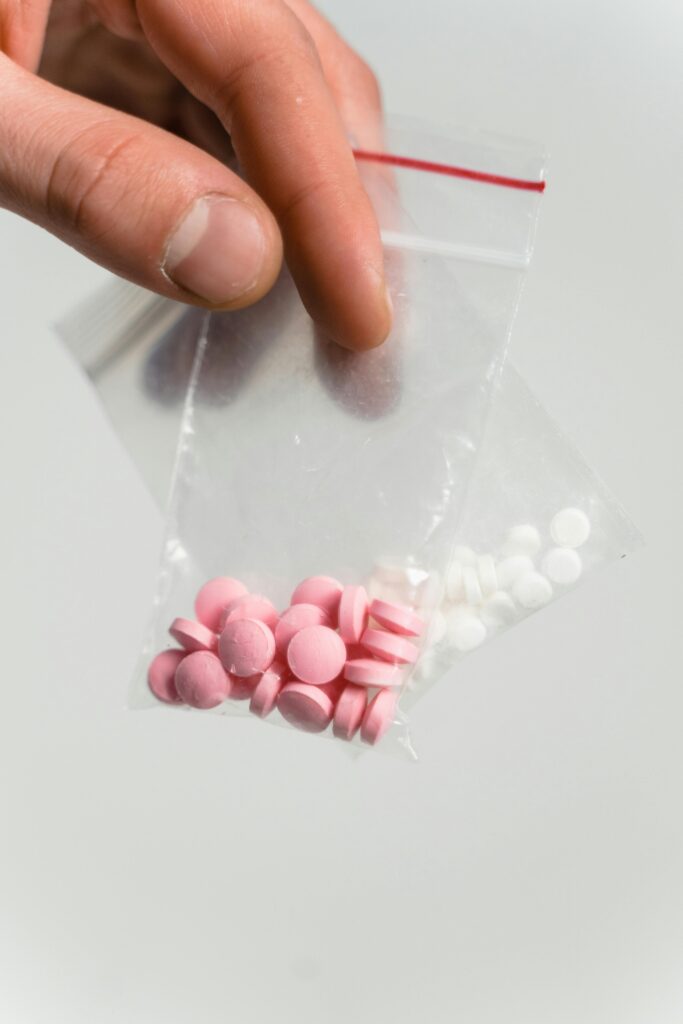Opioid Addiction Treatment & Detox Program in Florida
Opioid addiction has become one of the most devastating public health challenges in the United States. From prescription painkillers like OxyContin, Vicodin, and Percocet to illicit opioids such as heroin and fentanyl, these drugs create powerful physical dependence that traps people in a dangerous cycle of cravings, withdrawal, and relapse. Without professional treatment, the risk of overdose is extremely high. At Seaside Wellness in West Palm Beach, we provide specialized opioid detox and addiction treatment, offering medical expertise and compassionate care to help clients reclaim their lives.
Opioid addiction, from painkillers to heroin and fentanyl, creates dangerous dependence and high overdose risks. At Seaside Wellness, we provide safe detox and treatment to guide lasting recovery.


Understanding opioid abuse and Its Impact
What Is Opioid Addiction?
Opioid addiction is a chronic disease that develops when the brain and body become dependent on prescription painkillers or illicit opioids like heroin and fentanyl. These substances bind to opioid receptors in the brain, producing pain relief, relaxation, and euphoria. Over time, repeated use rewires the brain’s reward system, leading to compulsive drug-seeking behavior, powerful cravings, and the inability to stop, even when facing severe consequences.
What makes opioid addiction especially dangerous is the rapid development of tolerance. People need increasingly higher doses to achieve the same effects, raising the risk of accidental overdose. Withdrawal symptoms can also be intense, making it extremely difficult to quit without professional medical support. According to the CDC, opioids were involved in over 75% of drug overdose deaths in the U.S. in 2021, highlighting the urgent need for effective opioid detox and treatment programs.
Signs and Symptoms of Opioid Addiction
Recognizing the signs of opioid addiction early is critical to preventing serious health risks and overdose. While symptoms can vary depending on the type of opioid used, the amount, and the length of use, there are common physical, behavioral, and psychological warning signs to look out for.
Physical symptoms
- Constricted (“pinpoint”) pupils
- Drowsiness or “nodding off”
- Slurred speech
- Constipation or nausea
- Slowed breathing or shallow respirations
- Track marks or skin infections from injection use
Behavioral symptoms
- Doctor shopping or forging prescriptions
- Taking more medication than prescribed
- Secretive or deceptive behavior about drug use
- Financial or legal problems related to obtaining opioids
- Loss of interest in daily responsibilities or hobbies
Psychological symptoms
- Mood swings or irritability
- Anxiety or depression
- Intense cravings for opioids
- Depression and loss of interest in activities
- Memory and concentration problems
These signs should never be ignored. If you or someone you care about is showing multiple symptoms, seeking professional help immediately can prevent life-threatening consequences.
Understanding the Risks of Opioid Misuse
Opioid addiction impacts every part of a person’s life, physically, mentally, and socially. Over time, misuse of opioids changes the brain’s chemistry, creating powerful dependence that makes it extremely difficult to stop without help. The longer addiction continues, the more severe and lasting the effects can become. Here are some of the most common consequences:
Short-term effects
- Euphoria followed by drowsiness
- Slowed breathing and heart rate
- Confusion or clouded thinking
- Itching and flushed skin
- Nausea and vomiting
Long-term effects
- Increased risk of overdose and death
- Brain damage from lack of oxygen due to respiratory depression
- Severe constipation and gastrointestinal issues
- Hormonal imbalances and sexual dysfunction
- Weakened immune system and higher risk of infections
- Damage to relationships, work, and overall quality of life
Opioid addiction doesn’t just affect the individual, but it also places an emotional and financial strain on families and communities. That’s why timely treatment is so essential for breaking the cycle and rebuilding a healthier, more stable future.
Get started today
Opioid Withdrawal and Why Professional Detox Is Essential
When someone dependent on opioids suddenly stops using them, the brain and body struggle to function without the drug. Because opioids alter the central nervous system, removing them too quickly throws the system into overdrive, leading to painful withdrawal symptoms and intense cravings. This is what makes opioid withdrawal not only extremely uncomfortable but also potentially dangerous without medical supervision.
What happens during opioid withdrawal?
Opioids attach to receptors in the brain and nervous system, blocking pain signals and producing a sense of relaxation or euphoria. Over time, the body adapts and becomes dependent on the drug to feel normal. When opioid use stops, the nervous system rebounds into hyperactivity, resulting in severe withdrawal symptoms such as sweating, nausea, body aches, insomnia, and anxiety. Because opioid withdrawal can begin within hours of the last dose and may persist for days or weeks, relapse is very common without professional support. This is why medical opioid detox is considered the safest and most effective first step in recovery. Here are the three main phases of fentanyl withdrawal:
Early Withdrawal (6–12 hours after last use):
- Anxiety, irritability, and restlessness
- Sweating, runny nose, and watery eyes
- Muscle aches and frequent yawning
Acute Withdrawal (1–3 days):
- Nausea, vomiting, and diarrhea
- Abdominal cramps and chills
- Severe drug cravings and insomnia
Prolonged Withdrawal (up to 1–2 weeks or more):
- Depression, anxiety, and mood swings
- Fatigue and difficulty sleeping
- Lingering cravings that increase relapse risk
Because opioid withdrawal can be so intense, many people relapse without medical support. That’s why you should seek professional help to support you during this harsh process.
trust Seaside to detox safely from opioid
Opioid withdrawal affects both the body and the mind, making it dangerous to attempt detox without professional care. At Seaside Wellness, our opioid detox program blends medical supervision with compassionate support to keep clients safe, stable, and as comfortable as possible throughout the process. We help you lay the foundation for long-term recovery.
Medical Safety
Our licensed medical team provides 24/7 monitoring and medication-assisted treatment (MAT) when necessary, ensuring that severe withdrawal symptoms are managed immediately.
Comfortable Environment
Clients heal in a supportive, coastal setting where they can focus on recovery away from triggers. To reduce stress, making the detox process more tolerable and effective.
Personalized Treatment
Every client receives an individualized detox plan tailored to their history of opioid use, health conditions, and mental health needs. MAT is available when appropriate to help.
Seamless Transition to Rehab
Once detox is complete, clients can smoothly transition into residential care, partial hospitalization, or outpatient programs within Seaside’s network, ensuring continuity of care that supports lasting sobriety.
Treatment Options for opioid Addiction
Recovering from opioid addiction requires more than just detox, but it takes structured, evidence-based programs that address the root causes of substance use while supporting long-term healing. At Seaside Wellness in West Palm Beach, we provide a full continuum of care so every client receives the right level of treatment at each stage of recovery.
Substance Abuse Residential Inpatient
Dual Diagnosis and opioid Addiction
Opioid addiction often goes hand-in-hand with mental health conditions such as depression, anxiety, PTSD, or bipolar disorder. When both issues are present, this is called a co-occurring disorder or dual diagnosis. If left untreated, mental health struggles can fuel addiction, while substance use can worsen psychiatric symptoms, which create a dangerous cycle that makes recovery harder.
At Seaside Wellness, our dual diagnosis treatment program addresses both opioid addiction and mental health disorders simultaneously. Our clinical team provides psychiatric care, therapy, and evidence-based treatments designed to stabilize mood, improve coping skills, and reduce the risk of relapse. By treating the whole person, we help clients break free from dependence and build a healthier, more balanced life.



Expert fentanyl addiction & Mental health rehab in Palm Beach County
Why Choose Seaside for opioid Addiction Treatment?
At Seaside Wellness, we recognize that opioid addiction presents unique challenges. The intense cravings, high risk of relapse, and life-threatening dangers of overdose require specialized care that goes beyond standard treatment. That’s why our programs are designed to provide immediate safety and lasting recovery for those struggling with opioid dependence.
Our team combines expert opioid addiction treatment with 24/7 medical supervision, evidence-based therapies, and dual diagnosis care to address both substance use and co-occurring mental health disorders. Each client receives a personalized treatment plan focused on stabilization, relapse prevention, and long-term healing from day one.
Located in Palm Beach County, our modern facility offers a safe and supportive environment where clients can step away from daily triggers and focus fully on recovery. With seamless transitions into residential care, outpatient programs, and aftercare planning, Seaside ensures that no one has to face opioid addiction alone.
About us
Therapies
Most frequently asked questions
What are opioids?
Opioids are a class of drugs that include prescription pain relievers such as oxycodone, hydrocodone, codeine, and morphine, as well as illegal drugs like heroin and synthetic opioids such as fentanyl. They are commonly prescribed for pain but carry a high risk of addiction.
Why are opioids so addictive?
Opioids flood the brain with dopamine, creating intense feelings of pleasure and relaxation. Over time, the brain adjusts to rely on the drug, leading to physical dependence and compulsive drug-seeking behavior, even when negative consequences arise.
What are the signs of opioid addiction?
Common signs of opioid addiction include intense cravings, drowsiness, pinpoint pupils, mood swings, changes in sleep patterns, neglect of responsibilities, and withdrawal symptoms when not using. If you notice these warning signs in yourself or a loved one, it’s important to seek help right away.
Can opioid withdrawal be dangerous?
Yes. Opioid withdrawal can cause symptoms such as nausea, vomiting, sweating, muscle pain, anxiety, and insomnia. While not always life-threatening, the symptoms are extremely uncomfortable and can quickly lead to relapse. Medical detox ensures these symptoms are managed safely under 24/7 supervision.
How long does opioid withdrawal last?
Withdrawal typically begins within 6–12 hours after the last dose, peaks in 1–3 days, and may last up to a week or more. Some people also experience post-acute withdrawal symptoms (PAWS), such as anxiety, depression, and cravings, that can linger for weeks. Professional detox and ongoing care help reduce these risks.
What treatments are available for opioid addiction at Seaside?
Seaside offers a full continuum of care, including medical detox, residential inpatient treatment, and dual diagnosis care. We also have partial hospitalization programs (PHP), intensive outpatient programs (IOP) as part of our broader network. Our team creates personalized treatment plans that combine evidence-based therapies, medication-assisted treatment (MAT), and holistic support to promote lasting recovery.
What is medication-assisted treatment (MAT)?
MAT combines FDA-approved medications like buprenorphine, methadone, or naltrexone with behavioral therapy. These medications reduce cravings and withdrawal symptoms, making it easier to focus on recovery and avoid relapse.
What is dual diagnosis treatment, and why is it important?
Many individuals with opioid addiction also struggle with mental health conditions such as depression, anxiety, or PTSD. Dual diagnosis treatment addresses both addiction and co-occurring disorders at the same time, improving long-term recovery outcomes.
Can I recover from opioid addiction without going to rehab?
While some people attempt to quit on their own, the chances of relapse are high without professional help. Structured rehab programs provide medical care, therapy, and relapse prevention tools that significantly increase the likelihood of long-term sobriety.
How long does opioid addiction treatment take?
The length of treatment depends on individual needs. Detox may last 5–7 days, but inpatient programs often run 30–90 days, with outpatient care continuing for several months. Recovery is a lifelong journey, and ongoing support is key.
Does insurance cover opioid addiction treatment?
Most insurance plans cover at least part of opioid addiction treatment, including detox, inpatient, and outpatient programs. At Seaside Wellness, our admissions team verifies insurance benefits and helps families understand their coverage so treatment can begin quickly.
How can I get started with opioid addiction treatment at Seaside Wellness?
Getting started is simple. Call our admissions team or fill out our confidential online form. We’ll review your situation, verify insurance, and recommend the safest treatment options so you or your loved one can begin recovery right away.
100% confidential, free assessment
Start your recovery journey from opioid today
If you or someone you love is struggling with opioid addiction or facing the challenges of withdrawal, Seaside Wellness in West Palm Beach is here to help. Fill out our confidential form below, and a member of our admissions team will contact you quickly to answer your questions, verify your insurance, and explain the safest treatment options. Getting started is private, judgment-free, and designed to give you the support you need to begin recovery with confidence.
